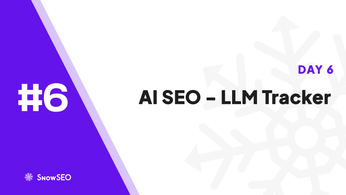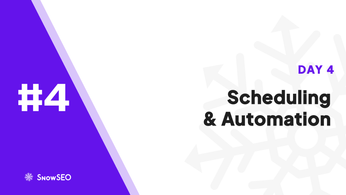
9 Expert Tips for Hyper-Personalized Content
Table of Contents
Discover how hyper-personalization can transform your marketing results. Many marketers struggle to effectively implement personalized marketing strategies, often missing the mark on true audience engagement. Research shows that 90% of companies using personalization see a measurable lift in business results, yet only a fraction achieve advanced personalization at scale, according to McKinsey’s analysis of digital marketing trends. This article will share expert tips, actionable strategies, and tool recommendations, drawing on insights from industry leaders and proven case studies to help you unlock the full potential of hyper-personalized content.
In 2025, hyper-personalization has become essential for delivering tailored digital experiences that meet individual preferences and needs. The Centers for Disease Control and Prevention (CDC) reports that approximately 76.4% of U.S. adults have at least one chronic condition, highlighting the necessity for personalized health interventions. (cdc.gov) Additionally, research indicates that algorithmic personalization can lead to overconfidence and inaccurate generalizations, underscoring the importance of carefully designed personalized content. (pubmed.ncbi.nlm.nih.gov) By leveraging data-driven insights, organizations can create more engaging and effective user experiences, fostering stronger connections and improved outcomes.

Expert Tip 1: Understanding Your Audience
In personalized marketing, grasping your audience’s unique characteristics is essential. The Centers for Disease Control and Prevention (CDC) emphasizes that identifying and understanding your target audience’s needs, motivations, and lifestyles enables the creation of tailored messages and activities that resonate effectively. (archive.cdc.gov) Audience segmentation, which involves dividing a population into subgroups based on criteria like demographics and behaviors, is a fundamental strategy in communication campaigns to influence health and social change. (en.wikipedia.org)
Implementing personalized content effectively requires leveraging advanced tools that analyze user behavior and preferences. For instance, the Oak Ridge National Laboratory developed a system that recommends academic content tailored to individual users, enhancing the relevance of information presented. (ornl.gov) Similarly, the SUGGEST system dynamically personalizes web content without user intervention, improving user engagement by adapting to individual interests. (cacm.acm.org) These technologies exemplify how integrating user data with adaptive algorithms can create customized content experiences.

Artificial Intelligence (AI) is revolutionizing content personalization by analyzing user data to deliver tailored experiences. A 2024 study highlighted that AI-driven personalization significantly enhances user engagement metrics, such as time spent on site and click-through rates, by aligning content delivery with individual preferences. (researchgate.net) In healthcare, machine learning algorithms have been employed to customize web-based content, improving patient education and promoting positive behavior changes. (pmc.ncbi.nlm.nih.gov) By leveraging AI, marketers can create dynamic, personalized content that resonates with users, fostering deeper connections and driving conversions.
Crafting engaging, personalized experiences across multiple channels is essential for enhancing user satisfaction and loyalty. A study published in the Communications of the ACM highlights that personalization involves tailoring content and services to individual preferences, which can significantly improve user engagement. (cacm.acm.org) Additionally, research in the Journal of Medical Internet Research emphasizes the importance of understanding diverse user behaviors to design effective personalized health websites. (pmc.ncbi.nlm.nih.gov) By integrating user data and preferences, businesses can deliver cohesive and relevant experiences, fostering deeper connections with their audience.
Implementing personalized strategies in public health faces challenges such as data privacy concerns and the need for tailored communication. A study in the Milbank Quarterly highlights that, despite strong public support for using identifiable data in public health, African American communities exhibit decreased comfort, likely due to heightened awareness of systemic racism and disparities. (pmc.ncbi.nlm.nih.gov) To address these issues, employing human-centered design methodologies can enhance communication effectiveness. Research in Frontiers in Pediatrics demonstrates that engaging parents through co-designed messages and tools fosters better conversations about early life obesity prevention, leading to improved health outcomes. (pmc.ncbi.nlm.nih.gov)
Personalized marketing, also known as one-to-one marketing, tailors messages and products to individual consumers based on their unique characteristics and behaviors. This approach enhances customer engagement by delivering relevant content, leading to increased satisfaction and loyalty. For instance, a study published in PLoS One demonstrated that personalized recommendations significantly improve user engagement and conversion rates. Additionally, personalized marketing can optimize resource allocation by focusing efforts on high-potential segments, thereby increasing return on investment. However, it’s crucial to address privacy concerns and ensure ethical data usage to maintain consumer trust.
To effectively measure the success of personalized marketing campaigns, it’s essential to track both engagement and behavioral change metrics. Engagement metrics include website visits, social media interactions, and click-through rates, which indicate initial audience interest. Behavioral change metrics, such as contact with services or product purchases, reflect deeper audience impact. A study on tobacco control campaigns highlighted the importance of evaluating both engagement and behavioral outcomes to assess campaign effectiveness. (pmc.ncbi.nlm.nih.gov) Additionally, a framework for evaluating digital public health campaigns emphasizes the need for comprehensive metrics that capture the full spectrum of campaign impact. (pmc.ncbi.nlm.nih.gov)
Ensuring privacy and security in personalized marketing is paramount. A study published in the Journal of Medical Internet Research highlights that U.S. residents prefer their data to be used for public health and research rather than for-profit activities. (pubmed.ncbi.nlm.nih.gov) To align with these preferences, businesses should implement robust data protection measures, such as anonymizing user data and obtaining explicit consent for data collection. Additionally, adhering to privacy laws and industry standards is crucial to maintain consumer trust and comply with legal requirements.
The future of personalized marketing is poised to be revolutionized by advancements in artificial intelligence (AI) and machine learning. These technologies enable the analysis of vast datasets to deliver content tailored to individual preferences, enhancing user engagement and satisfaction. In healthcare, for instance, machine learning algorithms are being utilized to customize web-based content, improving patient education and promoting positive behavior changes. This approach has demonstrated effectiveness in increasing patient engagement and adherence to treatment plans. (pmc.ncbi.nlm.nih.gov) As these technologies continue to evolve, their application in personalized marketing is expected to become more sophisticated, offering unprecedented levels of customization and effectiveness.
Ready to put these hyper-personalized content tips into action? Discover how SnowSEO can automate your SEO, personalize content for every channel, and help you rank higher on Google and AI platforms. Start optimizing today at snowseo.com and accelerate your organic growth.
Frequently Asked Questions
Q1: How does hyper-personalized content differ from traditional personalization?
Hyper-personalized content goes beyond basic segmentation, using real-time data, behavioral insights, and AI-driven analytics to tailor messages for each individual. Unlike traditional personalization, which might use a customer’s name or location, hyper-personalization leverages browsing habits, purchase history, and predictive analytics to deliver content that feels uniquely relevant. This approach enables brands to anticipate needs, offer timely recommendations, and create memorable experiences that drive higher engagement and conversions.
Q2: What are the main benefits of implementing hyper-personalized content strategies?
The primary benefits include increased customer engagement, higher conversion rates, and improved loyalty. Hyper-personalized content makes users feel valued, leading to longer site visits and more frequent interactions. Businesses also see a measurable lift in ROI, as content resonates more deeply and prompts action. By addressing individual preferences and pain points, companies can differentiate themselves in crowded markets and foster long-term customer relationships.
Q3: What tools are essential for creating hyper-personalized content?
Key tools include customer data platforms (CDPs), AI-powered analytics solutions, and personalization engines like Adobe Experience Cloud or Optimizely. These platforms help aggregate data, segment audiences, and automate content delivery, ensuring every interaction is relevant and timely.
Conclusion
Hyper-personalization stands out as a transformative strategy, significantly enhancing customer engagement and satisfaction. Selecting the right tools, such as Adobe Experience Cloud and Optimizely, is essential for effective implementation. Leveraging data analytics and customer insights drives superior results, as highlighted by recent academic research. To maximize impact, explore and adopt proven personalization strategies. For actionable next steps, download our free personalization strategy checklist and begin implementing these expert tips to elevate your content and customer experience today.





